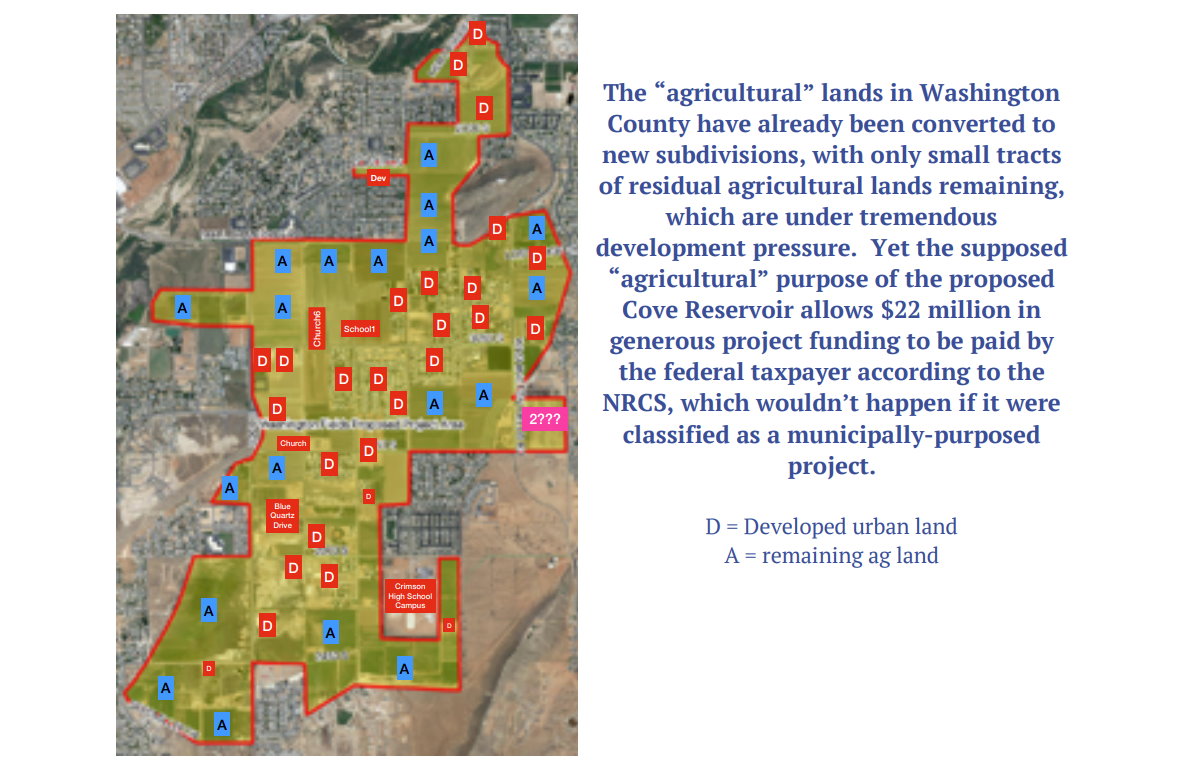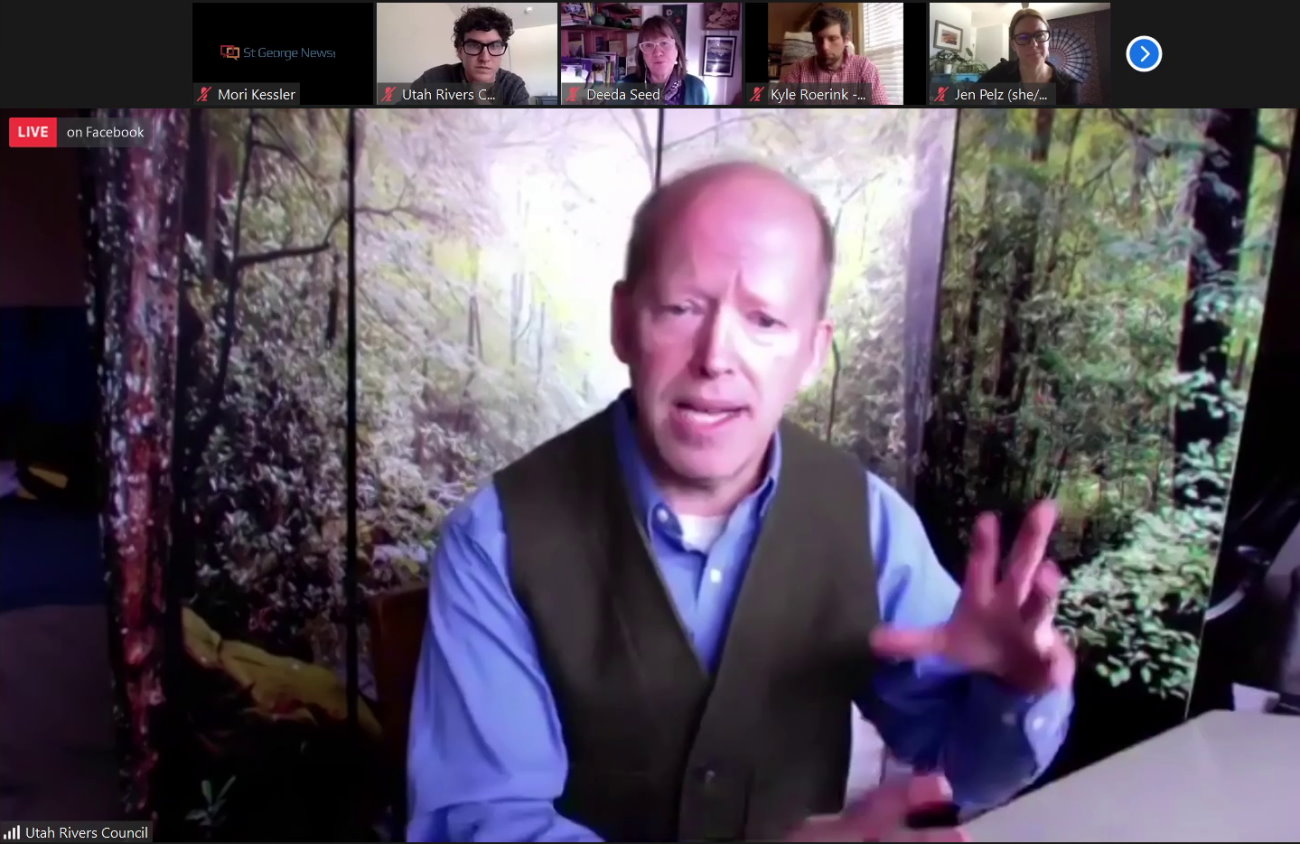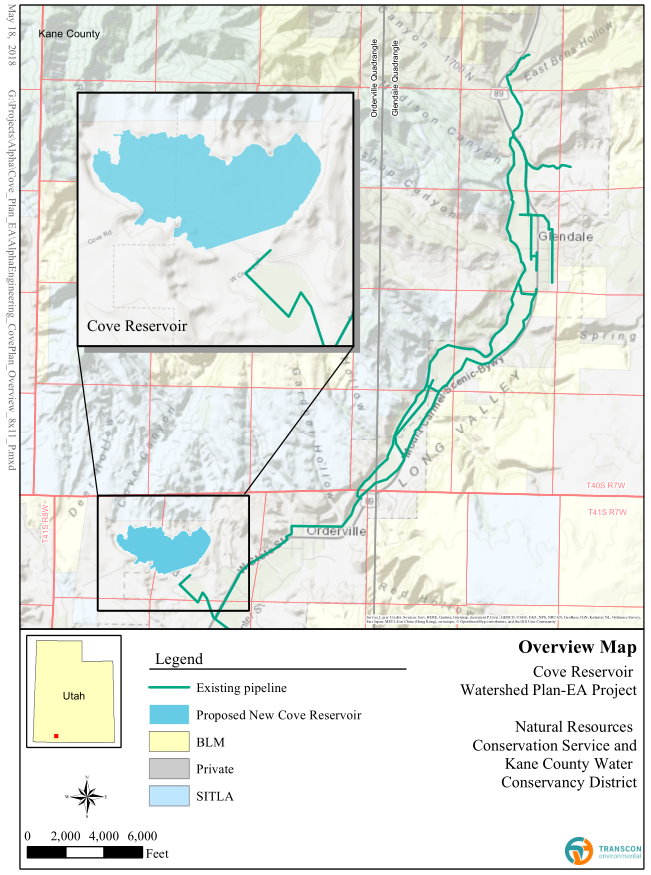ST. GEORGE —A federal agency announced earlier this month that a new reservoir that would be located off the Virgin River and upstream of Zion National Park will now be subject to a much more comprehensive review and environmental study versus the original assessment released in December.

While area water managers are disappointed by the decision and say it is a wasteful and unnecessary move, conservation advocates are pleased with the news and are also calling for a federal investigation into the reservoir’s true use.
The Cove Reservoir
The Natural Resources Conservation Service released an environmental assessment in December that detailed the potential use, need and benefit of the proposed Cove Reservoir.
The reservoir is proposed west of Orderville in Kane County and would take in around 6,000 acre-feet of water from the East Fork of the Virgin River upstream from Zion National Park. A stated general purpose of the reservoir is to bolster flows in the Virgin River when those flows are low. According to the assessment, this is anticipated to benefit farmers in Kane and Washington counties and wildlife on the Virgin River, as well as create additional recreational opportunities in Kane County.
A pipeline accessing the proposed reservoir and adjacent recreation facilities would also be constructed, and a hydroelectric power plant would be built near Glendale.

“This is a small, little off-stream reservoir,” Zachary Renstrom, general manager of the Washington County Water Conservancy District, said Friday. “Essentially, all we’re doing is taking flood water, storing that and releasing the water when (the river) flows are really low – when fish and the plants and the people really need it.”
Though the Kane County Water Conservancy District is the primary sponsor of the project, the Washington County Water Conservancy District is listed as a cooperating agency, as Washington County would receive the bulk of the additional water.
Approximately 5,000 acres of farmland in Washington County and 1,100 acres of farmland in Kane County are estimated to benefit from stable irrigation flows from the proposed reservoir.
“We feel like it’s a good benefit,” Mike Noel, general manager of the Kane County Water Conservancy District, previously told St. George News.
St. George News attempted to contact Noel for further comment on the reservoir project and impact study announcement but have not received a response as of publication of this article.
Public comment drives move to environmental impact study

Renstrom told St. George News that an environmental assessment looks at the direct area to be impacted by a project and not the myriad of issues addressed within the wide scope of an environmental impact study. The environmental impact study can also be a bit more costly when compared to an environmental assessment, he added.
“It’s frustrating now that we’re going to have to spend possibly millions of dollars to create a bunch of paperwork to say that (the reservoir) is a good idea,” Renstrom said, adding he’d rather see the money used on other projects like habitat restoration or watershed protection. “I don’t like spending money needlessly.”
The decision to initiate the more thorough environmental impact study came about “after careful review and consideration of (public) comments received,” according to a Natural Resources Conservation Service statement, which added, “The EIS will analyze the proposed action along with any viable alternatives in accordance with the rules and guidelines of the National Environmental Policy Act.”
Norm Evenstad, Natural Resources Conservation Service assistant state conservationist for water resources, said in the statement that their agency values feedback from the community.
“That’s why we have comment periods during the scoping, draft plan and final plan phases. We take that feedback seriously and sometimes that can change the trajectory of a project.”
Renstrom lamented that an environmental impact study process will likely take longer to complete than one conducted through the environmental assessment.
‘We’d still like to have an investigation’

While the Utah Rivers Council is pleased with the Natural Resources Conservation Service’s decision to engage in a study for the Cove Reservoir, Zachery Frankel, executive director of the council, said they still want an investigation into how the reservoir water will be used, as that can determine how much taxpayers will have to pay for the project.
The Cove Reservoir is estimated to cost $30 million to build, with taxpayers covering $21.4 million of that and Kane and Washington counties covering the rest – provided the water is used for agricultural purposes. The federal government – that is, the taxpayers – will cover agricultural water-use projects up to 75%. However, if the water is geared for municipal use, then taxpayers will only cover 30% of the project.
The Utah Rivers Council and six other conservation and environmental advocacy groups held a virtual press conference on Jan. 12 that called on the inspector general of the U.S. Department of Agriculture to investigate how the reservoir’s water would be used.
The other groups that joined the Utah Rivers Council in its call for an investigation include the Center for Biological Diversity, Wild Earth Guardians, Great Basin Water Network, Glen Canyon Institute and Living Rivers/Colorado Riverkeeper.
A graphic shared during the press conference showed the general area where Washington County’s portion of the water was to go. This area was set over a map of the Washington Fields area where a mix of agricultural and residential developments currently exist. The area is among those in the county experiencing increasing growth. Also within the boundaries of where the water is alleged to be used is the location of the incoming Red Cliffs Utah Temple.
“In this ‘agricultural area’ are a number of subdivisions,” Frankel said during the press conference. “That’s not an agriculture purpose. That’s clearly a municipal purpose.”
Since the the press conference, there has been no news of a potential investigation being launched.

“We’d still like to have an investigation as to what involvement proponents (of this project) played in trying to game federal taxpayers out of $21 million for a municipal water project,” Frankel told St. George News on Wednesday. “Utah taxpayers deserve honesty and transparency.”
Renstrom said the accusations surrounding the project were meritless and without evidence.
“It’s sad when people make wild accusations like that,” he said.
Moving forward
“We are committed to working closely with our local partners and value the locally-led process for projects like this,” Evenstad said in the Natural Resources Conservation Service statement. “We are committed to helping build resiliency in our communities, for our partners, and for the land in our great state.”
As the planning process moves forward, the agency will announce all public involvement opportunities as they arise, including all virtual public and agency meetings.
The meetings will provide an opportunity to obtain updated information and provide comments on the project. The Natural Resources Conservation Service will provide at least a 14-day advance notice of public involvement opportunities.
Further information on the proposed project will be made available on the Natural Resources Conservation Service’s Cove Reservoir Watershed Project website.
Copyright St. George News, SaintGeorgeUtah.com LLC, 2021, all rights reserved.